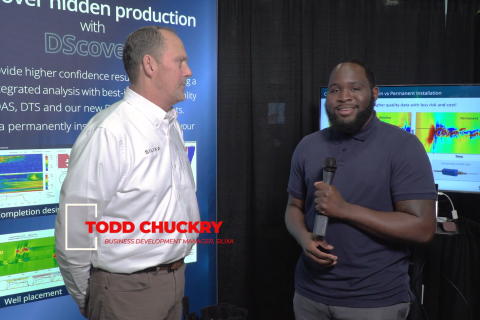The Permian basin has been riding a rollercoaster of highs and lows for nearly a century. It’s seen the highs of the booms, the lows of the busts and later a steady decline in production as producers moved away from the conventional plays. Fast forward a few decades and, today, the region is on yet another high. It’s all thanks to hydraulic fracturing and horizontal drilling advancements, which untapped a new wealth of resources.
With the blessing of those new technologies came a curse, of sorts, in the form of inadequate midstream infrastructure. There simply weren’t enough pipelines to transport the influx of crude, natural gas and natural gas liquids (NGL) to market. And so as scores of Permian producers moved in to unlock the play’s new potential, they began facing costly and frustrating takeaway challenges. But with new pipeline and processing facilities set to come online this year, those constraints are expected to soon see major relief. And with adequate infrastructure in place, some say the Permian is set to enjoy its greatest high yet.
Costly constraints
For the past year, takeaway capacity constraints have caused no shortage of headaches for companies operating in the Permian. With more than a million barrels (bbl.) of crude flowing from the region each day, there’s simply not enough midstream infrastructure to get it all to market. As a result, pipeline space is being sold at a premium. This is driving down company profits as pricing differentials widen between North Sea Brent, the Cushing, Oklahoma, hub and Midland, Texas.
Though Cushing is considered the pipeline hub of the U.S., the lost revenue from shipping crude there is lessening the profit generated from drilled wells. This is slowing capital spending and drilling activity in the region, says Permian Basin Petroleum Association Chairman Mark Merritt.
“Whenever we start seeing oil prices net at the well head in the $70 range and lower, we start to see curtailment of activity as a result, partially just from reduced cash flow to be able to reinvest,” Merritt tells Midstream Business. “The economics of some of the plays are not as good, so they start to curtail the activity. I’ve read there are some analysts projecting we may see oil prices at the wellhead at the Permian dip down in the $50s because of the pipeline constraints. That’s a significant concern.”
This infrastructure shortage has hit the Permian during a time of significant, though not unprecedented, growth. Production in the region peaked in the early 1970s at about 2.2 million bbl. a day. Drilling activity in the Permian dates back to 1921, when the area’s first oil well was completed. Comprised of dozens of counties in West Texas and southeastern New Mexico, the Permian stretches across a 250-milewide and 300-mile-long region. Producing formations include the Spraberry, Bone Spring, Wolfberry and Wolfcamp.
After hitting its peak in the 1970s, Permian production went on a steady decline until about 2008, when hydraulic fracturing and horizontal drilling opened up unconventional reservoirs. Since 2008, production has grown more than 30% and is on a steady incline. Crude production is currently slightly above 1.3 million bbl. per day. Bentek Energy has predicted that the Permian will reach 1.8 million bbl. per day in 2016. Merritt says the potential could be much greater, provided midstream constraints are relieved.
Incredible resources
“I think we’ll continue to see significant growth in the Permian basin. The resources are pretty incredible,” Merritt says. “The unconventional resource potential out here as a result of the technology has really opened up huge areas for drilling and production. I think we’re still, in a lot of ways, in the beginning stages of that. And so, I think the potential is really large.”
Merritt’s hopes are fuelled by a handful of major projects that are set to alleviate the region’s takeaway congestion. Several expansions and pipeline reversals are expected to come online in 2013 and early 2014. “But in the meantime we may see things get worse before they get better, as far as I’m concerned,” says Merritt.
New projects include Sunoco Logistics Partners LP’s West Texas Gulf Expansion and its Permian Express Pipeline project, which combined are expected to provide an extra 200,000 bbl. per day of takeaway capacity. As well, Magellan Midstream Partners LP is reversing its Longhorn pipeline to move crude from Crane, Texas, to Houston. Magellan says it expects to begin moving at least 75,000 bbl. a day of crude oil to Houston in early 2013, before increasing to the full 225,000 bbl. a day capacity in mid 2013. Additionally, Magellan and Occidental Petroleum Corp. are constructing the BridgeTex pipeline, which will transport nearly 300,000 bbl. per day from the Permian basin to the Gulf Coast. This project is set to come online in mid-2014.
“This (new infrastructure) would basically keep up with the growth for several years to come,” says Merritt, who adds he is optimistic about the play. “I’ve been in the industry for 32 years now. I think the industry is the brightest in the Permian basin it’s been in the 32 years I’ve been here.”
Robb Barnes, Magellan’s vice president of marine terminals and crude oil, says Magellan’s aforementioned projects will be an effective way of eliminating bottlenecks and getting Permian product to the end market. But with production expected to continue outpacing takeaway capacity, he says additional pipeline projects may be needed to get product to refiners.
“We’re excited about it. They were constrained before, and they’re still constrained but as our pipeline takeaway capacity comes online it will help solve that problem,” Barnes tells Midstream Business. “It doesn’t eliminate the problem. The Permian basin has been forecast to increase its production by just less than 1 million bbl. a day over the next five years. Magellan’s takeaway capacity out of the Permian, if you add up our two new projects, does not meet the production growth that’s happening in the area. There are some other projects happening to help eliminate that problem, but production in the Permian and the Eagle Ford are moving fast. We are taking advantage of it by adding pipelines and we feel they’re good, strong projects.”
Processing power
Growth is afoot in the processing side of the Permian as well, especially where some companies are concerned. A few years ago, privately held Torch Midstream expanded its presence in the Permian with the acquisition of the Ramsey system, a small gathering system and processing plant in the Delaware basin near Orla, Texas. Torch soon realized the magnitude of the play and made a move to increase its Permian footprint and plant capacity. In partnership with its financial backer, EnCap Flatrock Midstream, Torch Midstream formed Nuevo Midstream LLC and contributed the Ramsey system, a 10 million cubic feet (MMcf) per day cryogenic processing facility and 130 mile high and low pressure gathering system that serves producers operating in West Texas and southeast New Mexico. Nuevo expanded that system with a new 100 MMcf per day cryogenic processing plant and more than 80 miles of high pressure gas gathering lines, bringing its current capacity to 110 MMcf per day. Nuevo recently ordered an additional 200 MMcf per day cryogenic processing plant. The company’s Phase III expansion plans will bring processing capacity to 310 MMcf per day in early 2014.
“Our customers are the producers, and we need to be able to service our customers,” Jay Lendrum, Nuevo’s president and chief executive, tells Midstream Business. “The Permian is an established and mature basin, but with the evolution of shale plays like the Bone Spring and Wolfcamp formations and the Avalon shale trend, there are new infrastructure requirements. The gathering and processing systems that were in place in our core area— the western part of the Permian—were simply not adequate to handle the increased volumes. We’ve basically taken on a greenfield development in a mature basin, and we’re very pleased with what we’ve been able to accomplish in a short time.”
When the shale revolution hit, processors were able to salvage some of the Permian’s existing capacity by using existing pipeline, adding additional compression and putting bypasses around bottlenecks. However, much of the Permian’s existing infrastructure was too far east for Nuevo to tap into, so it hasn’t been able to salvage much from the play’s past. For the most part, new or refurbished plants have been brought in to handle the significant increase in throughput.
“Those are sized correctly, and they’re set up to handle the gas stream we have here,” says Lendrum. “Generally, we could use some of the old systems, but our preference is to put in new construction, especially in some of these farther-out areas, such as the ones we’re in.”
Nuevo intends to add crude oil gathering pipelines in the region to complement its existing gas gathering and processing facilities. It’s been asked to do so by some of its producer clients, who are currently trucking crude from tank batteries to injection points. Many producers have already indicated they will dedicate the acreage necessary to install the crude oil system, says Lendrum.
“It makes sense for us and our customers,” he says. “We’re physically in the area already, and it’s a reasonably remote area. It’s a matter of making sure we can implement the plan, put it in place and save our customers some money, and it gives us a chance to make a little bit of money at the same time.”
Easing constraints
Relief is also on the way for NGLs, which have faced takeaway constraints for the past 18 months. In a move to alleviate bottlenecking, some companies are building pipeline super systems, which are expected to virtually eliminate transportation limitations. And with that issue resolved, hopes are higher than ever for the Permian, says Wouter van Kempen, president and chief executive of DCP Midstream LLC and chief executive of DCP Midstream Partners LP.
“As a company, we’re tremendously bullish around the Permian basin as a whole,” van Kempen tells Midstream Business. “It’s an area of the country that has seen tremendous growth. We have been, and I expect us to be in the Permian for a very long time to go.”
As the region’s largest gatherer and processor, DCP is helping lead the Permian charge. With operations in both West Texas and southeast New Mexico, the company boasts 17 plants with 1.3 billion cubic feet per day processing capacity. DCP produces more than 135,000 bbl. per day of NGLs. Its significant Permian market presence includes 10 million acres under dedication.
Aside from its current facilities, DCP has three additional plants permitted and two others on the drawing board. As well, DCP has several new projects under construction, including its Rawhide Plant, which is expected to start up this summer in the Wolfberry development. The new plant and its associated gathering system will give DCP an additional 75 MMcf per day of capacity. Additional plants are expected to be announced as the year unfolds. It is looking at adding more capacity in the Avalon-Bone Spring, Wolfberry and Wolfcamp areas.
The company is exploring other areas where it can restart or expand its plants, too. It recently added 150 MMcf. per day of capacity through the expansion and restarts of existing facilities. During the past 18 months, DCP further strengthened its midstream focus by building more NGL pipeline.
The Sand Hills Pipeline will provide new capacity for transporting NGLs from the Permian and Eagle Ford. It will start in West Texas, continue through South Texas and end at Mont Belvieu, outside Houston. The 720-mile common-carrier pipeline will have an initial capacity of 200,000 bbl. per day. DCP expects to grow that to 350,000 bbl. per day. Operations in the Eagle Ford commenced last year and Permian basin service is expected to begin in the second quarter.
Despite its rich—and already-existing—assortment of midstream infrastructure, DCP recognized the need for additional processing and transportation capacity. In recent years, it has spent plenty of time and money ensuring it could utilize all of its existing assets while expanding to accommodate growing demand.
The completion of the Sand Hills Pipeline will help wipe out the NGL takeaway issues the Permian faced in 2011 and 2012, says van Kempen.
“I really hope—and it’s not even a hope, it’s an expectation— that this is going to be something of the past and that soon we won’t have to be concerned about those issues anymore.”
Recommended Reading
Tech Trends: QYSEA’s Artificially Intelligent Underwater Additions
2024-02-13 - Using their AI underwater image filtering algorithm, the QYSEA AI Diver Tracking allows the FIFISH ROV to identify a diver's movements and conducts real-time automatic analysis.
Subsea Tieback Round-Up, 2026 and Beyond
2024-02-13 - The second in a two-part series, this report on subsea tiebacks looks at some of the projects around the world scheduled to come online in 2026 or later.
Exclusive: Silixa’s Distributed Fiber Optics Solutions for E&Ps
2024-03-19 - Todd Chuckry, business development manager for Silixa, highlights the company's DScover and Carina platforms to help oil and gas operators fully understand their fiber optics treatments from start to finish in this Hart Energy Exclusive.
CERAWeek: AI, Energy Industry Meet at Scary but Exciting Crossroads
2024-03-19 - From optimizing assets to enabling interoperability, digital technology works best through collaboration.
Cyber-informed Engineering Can Fortify OT Security
2024-03-12 - Ransomware is still a top threat in cybersecurity even as hacktivist attacks trend up, and the oil and gas sector must address both to maintain operational security.





